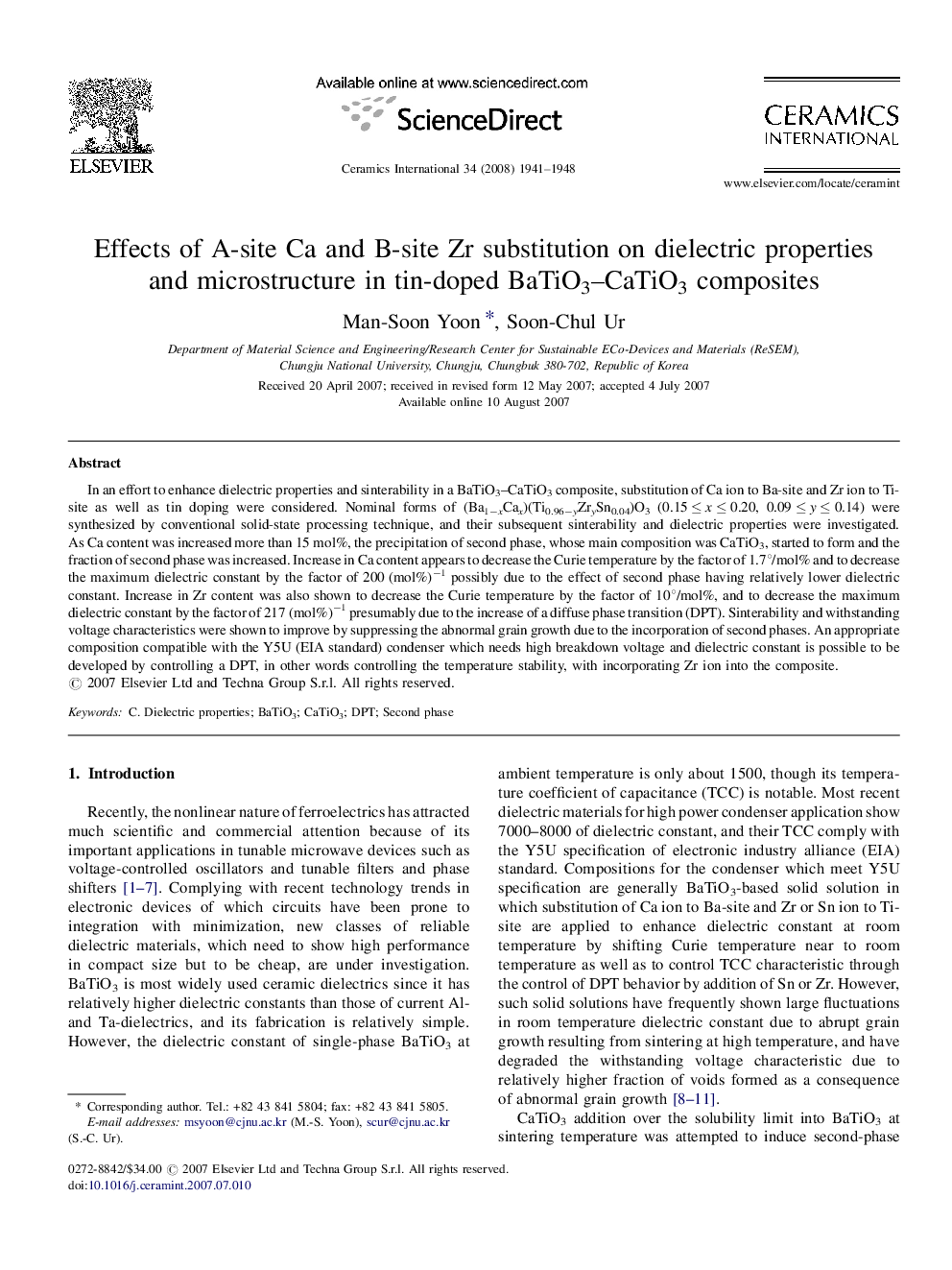| Article ID | Journal | Published Year | Pages | File Type |
|---|---|---|---|---|
| 1464346 | Ceramics International | 2008 | 8 Pages |
In an effort to enhance dielectric properties and sinterability in a BaTiO3–CaTiO3 composite, substitution of Ca ion to Ba-site and Zr ion to Ti-site as well as tin doping were considered. Nominal forms of (Ba1−xCax)(Ti0.96−yZrySn0.04)O3 (0.15 ≤ x ≤ 0.20, 0.09 ≤ y ≤ 0.14) were synthesized by conventional solid-state processing technique, and their subsequent sinterability and dielectric properties were investigated. As Ca content was increased more than 15 mol%, the precipitation of second phase, whose main composition was CaTiO3, started to form and the fraction of second phase was increased. Increase in Ca content appears to decrease the Curie temperature by the factor of 1.7°/mol% and to decrease the maximum dielectric constant by the factor of 200 (mol%)−1 possibly due to the effect of second phase having relatively lower dielectric constant. Increase in Zr content was also shown to decrease the Curie temperature by the factor of 10°/mol%, and to decrease the maximum dielectric constant by the factor of 217 (mol%)−1 presumably due to the increase of a diffuse phase transition (DPT). Sinterability and withstanding voltage characteristics were shown to improve by suppressing the abnormal grain growth due to the incorporation of second phases. An appropriate composition compatible with the Y5U (EIA standard) condenser which needs high breakdown voltage and dielectric constant is possible to be developed by controlling a DPT, in other words controlling the temperature stability, with incorporating Zr ion into the composite.
